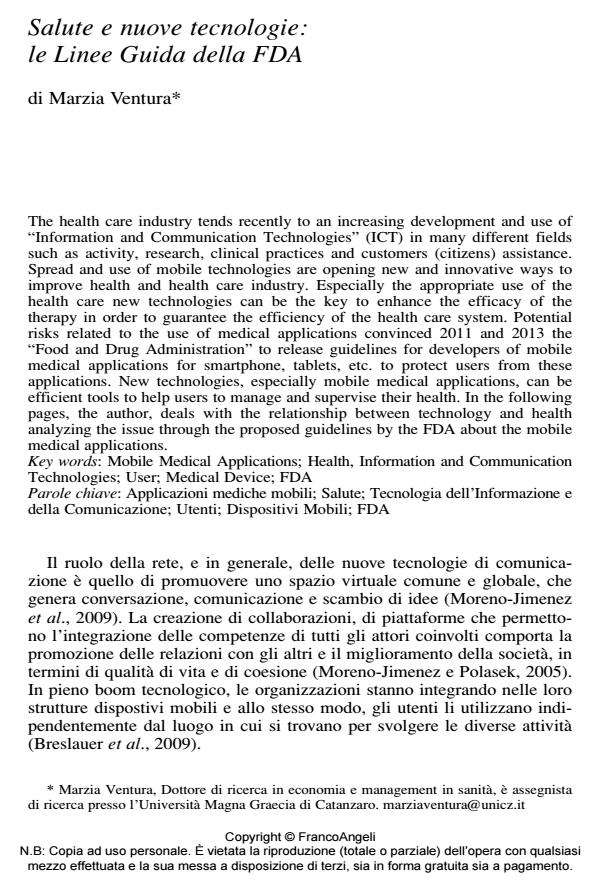Salute e nuove tecnologie: le Linee Guida della FDA
Journal title SALUTE E SOCIETÀ
Author/s Marzia Ventura
Publishing Year 2014 Issue 2014/3
Language Italian Pages 5 P. 176-180 File size 494 KB
DOI 10.3280/SES2014-003014
DOI is like a bar code for intellectual property: to have more infomation
click here
Below, you can see the article first page
If you want to buy this article in PDF format, you can do it, following the instructions to buy download credits

FrancoAngeli is member of Publishers International Linking Association, Inc (PILA), a not-for-profit association which run the CrossRef service enabling links to and from online scholarly content.
The health care industry tends recently to an increasing development and use of "Information and Communication Technologies" (ICT) in many different fields such as activity, research, clinical practices and customers (citizens) assistance. Spread and use of mobile technologies are opening new and innovative ways to improve health and health care industry. Especially the appropriate use of the health care new technologies can be the key to enhance the efficacy of the therapy in order to guarantee the efficiency of the health care system. Potential risks related to the use of medical applications convinced 2011 and 2013 the "Food and Drug Administration" to release guidelines for developers of mobile medical applications for smartphone, tablets, etc. to protect users from these applications. New technologies, especially mobile medical applications, can be efficient tools to help users to manage and supervise their health. In the following pages, the author, deals with the relationship between technology and health analyzing the issue through the proposed guidelines by the FDA about the mobile medical applications.
Keywords: Mobile Medical Applications; Health, Information and Communication Technologies; User; Medical Device; FDA
Marzia Ventura, Salute e nuove tecnologie: le Linee Guida della FDA in "SALUTE E SOCIETÀ" 3/2014, pp 176-180, DOI: 10.3280/SES2014-003014